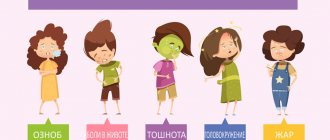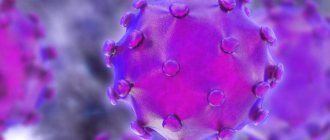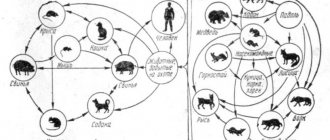The times of Hamlet, Rasputin and Cleopatra have long since sunk into oblivion, and the topic of acute poisoning does not lose its relevance to this day. More than 400 thousand become their victims every year on the planet. What is acute poisoning and why is it so important to know its symptoms?
Every year more and more toxic chemical compounds accumulate in the environment. Simply put, we come across potentially toxic substances every day and risk experiencing all the “delights” of the symptoms of poisoning through our own sad experience.
Tragedy can befall a person by an absurd accident or by accident - doctors call such poisoning unintentional. Unfortunately, there are also deliberate poisonings - they have long been used to settle accounts with one’s own life or get rid of competitors.
What poisonings are most common? What symptoms and signs indicate poisoning? How should first aid be provided? Let's try to figure it out...
A few words about poisons
According to scientists, any substance that enters the body can cause poisoning - after all, much depends not only on the concentration of the poison, but also on its quantity. Substances that are common and necessary for normal functioning of the body can become toxic in excessive quantities.
Under certain circumstances, even ordinary water can become dangerous: if you drink about 7 liters per day, you can get acute poisoning and even die from intoxication. Symptoms of water poisoning are associated with disruption of water and electrolyte metabolism in the body: swelling, cramps, vomiting, interruptions in heart function, diarrhea.
Toxic substances can enter the human body in all possible ways: through the mouth, skin, respiratory organs, by injection into the rectum, vein or ear canal. The severity of poisoning, symptoms and treatment, emergency measures to remove poison from the body depend on the type and amount of the toxic substance, and, of course, on the routes of its penetration.
The first symptoms of poisoning may appear immediately after the poison enters the body or within several hours or even days. First of all, the brain, liver, kidneys, and intestines are affected by toxic substances. These organs “give signals” - symptoms of poisoning that cannot be ignored!
Alcohol poisoning
Symptoms most often occur in the morning. Many consider them a kind of “retribution” for a stormy evening. This condition is more often called a hangover rather than alcohol poisoning.
Symptoms depend on the concentration of ethyl alcohol in the blood. At the beginning of intoxication, this is euphoria and talkativeness, with an increase in alcohol concentration - impaired speech and coordination of movements. The liver begins the process of recycling alcohol into simpler substances, aldehyde, water, carbon dioxide. It is acetaldehyde that is “to blame” for morning ailments: headache, thirst, nausea, dry mouth, dizziness.
Be careful!
In order for alcohol poisoning to occur, an adult needs on average about 200 ml of 40% ethanol; alcohol poisoning in a child occurs when drinking 30 ml of 40% ethanol (vodka).
Alcohol intoxication
The first characteristic signs appear within 30 minutes if strong drinks were consumed on an empty stomach. If a person has exceeded the dose of wine, vodka, beer and other products, he develops severe disorientation, pallor, breathing slows down, and all reactions are inhibited.
The alcohol content in the blood affects how long it takes for symptoms of poisoning to appear. Typically, intoxication can occur if you drink more than 500 ml of strong drink.
Alcohol is a poison for the body
Not only quantity affects the body, but also quality. A low price for a product, an unknown manufacturer are signs of low-quality alcohol and can provoke severe intoxication and even death (see Alcohol poisoning: symptoms of severe intoxication, coma, first aid at home).
Important! Danger to human life occurs if the blood alcohol content is 4.0% or more after approximately 10 hours.
Food poisoning. Symptoms
Almost all food products pose potential dangers and health risks. In some products, the level of food additives - the so-called "yes" - is "off the charts", others are contaminated with pathogenic bacteria, and others were simply consumed unwashed. Food poisoning, unfortunately, is not uncommon these days. If the rules for preparing, processing, and storing food are not followed, food poisoning may occur.
Food poisoning in an adult (child) can be:
- microbial, that is, associated with pathogenic bacteria (salmonellosis);
- non-microbial - associated with poisons of animal or plant origin. For example, mushroom poisoning or poisoning with the Japanese delicacy - poisonous fugu fish.
Also, symptoms of food poisoning in adults occur when consuming foods containing pesticides and heavy metal salts.
By the way, poisoning from fish, seafood and caviar is far from rare, since the waters of the world’s oceans are polluted with salts of heavy metals and other man-made “chemicals”.
Food poisoning in an adult can be associated with banal laziness in preparing food at home and the habit of eating at various public catering establishments. Food poisoning in a child is most often associated with his “knowledge of the world”: often children put into their mouths everything that interests them as soon as their parents turn away.
The most common symptoms of food poisoning:
- nausea;
- vomiting of eaten food;
- diarrhea (diarrhea).
Mushroom poisoning also causes convulsions, hallucinations, jaundice, and pain in the right side.
When starting treatment at home, do not forget to rinse your stomach from poor-quality food and take Enterosgel sorbent, or better yet, do not take risks and consult a doctor!
Prevention of disease.
In order to protect yourself from food poisoning, you must follow basic rules of personal hygiene: wash your hands before eating, handle food before eating and observe shelf life.
It is important to pay attention to the smell, taste, and condition of food and throw it away immediately if it has spoiled or become moldy. Food poisoning can often be caused by products containing cow's milk.
Besides:
- Avoid eating unknown, damaged or expired products;
- Store canned food in metal containers for no more than two years; Do not buy canned food in a dented jar without a label.
- Do not eat mushrooms, collected yourself or purchased at the market.
It is equally important to maintain hygiene when preparing and eating food. The kitchen and cooking equipment must be kept clean. Products must be thoroughly cooked.
Poisoning with acids (alkalis)
Intoxication with these chemicals is possible through inhalation of vapors, contact with the skin or in the stomach.
Poisoning by acid vapors is manifested by burns of the mucous membranes, bleeding, dry cough, bloody vomiting, pain in the mouth and chest.
Poisoning by household chemical vapors is accompanied by headache, cough, abdominal pain, nausea, and an unpleasant taste in the mouth.
Redness of the eyes, burning, runny nose, headache, nausea - typical symptoms of poisoning with vapors of varnishes and paints and traditional companions of home repairs!
Urgent actions
First aid for poisoning
In case of poisoning, a person will need medical attention, because depending on the amount of toxin and its type, there is a threat to life. Before the ambulance arrives, you can provide first aid to the patient at home.
Stomach cleansing
If the patient is not vomiting, then it is recommended to empty the stomach contents as soon as possible. You will need up to 2-3 liters of water, which you need to drink and induce vomiting. The faster you cleanse your stomach, the fewer toxins will enter the blood.
Cleansing enema
Next, you should cleanse the lower intestines using a cleansing enema.
Restoring water-salt balance
Since the body loses a lot of water during this period, it is necessary to restore the water-salt balance. The drugs rehydron, oralit and others are used. Regular drinking water, dried fruit compote, weak tea without sugar will also help replenish the amount of fluid.
Drink more fluid
Dangerous manifestations of dehydration in a patient are as follows:
severe weakness in the body;
strong thirst;
dry mouth;
nausea and vomiting;
diarrhea;
decrease in the total amount of urine.
Reception of sorbents
Treatment of poisoning
Enterosgel, activated carbon, smecta and other popular drugs will help reduce the toxic effect on the body.
Acute abdominal pain and persistent vomiting or diarrhea cannot be treated at home, therefore, for any type of poisoning, it is recommended to consult a specialist. The video in this article provides additional knowledge on what to do in case of poisoning.
Chlorine poisoning. Symptoms
Chlorine compounds are used in everyday life to clean surfaces, disinfect pool water and bleach laundry. Since chlorine has become firmly established in our daily lives, it is important to know what symptoms of poisoning with chlorine-containing substances may bother victims.
Dry cough, choking, sore throat, drooling, watery eyes, vomiting - these are the signs of chlorine poisoning.
Depending on the severity of intoxication in the body, chlorine poisoning can be mild, moderate and severe. Poisoning in children of any degree can only be treated in a hospital!
After carrying out the first emergency measures (gastric lavage and taking Enterosgel sorbent), the victim is hospitalized for medical care.
Drug poisoning
An overdose of medicinal substances approximately appears one hour after taking the tablets:
- Common symptoms include severe weakness and drowsiness.
- A person's appearance changes. The face turns red when taking large amounts of atropine or turns pale from iodine poisoning, and a skin rash may appear.
- Then, after 1-2 hours, the victim’s breathing slows down, the heartbeat is disrupted, and the coordination of movements changes sharply in case of barbiturate poisoning.
- Depending on the dose of the medicine, after 6 or more hours a person may lose consciousness.
- If medical assistance is not provided, cardiac and respiratory arrest occurs within 24 hours.
Poisoning can manifest itself in another way, when the dose of the medicine is greatly exceeded, then after one or two days liver or kidney failure begins. An overdose of non-steroidal anti-inflammatory drugs, including aspirin, analgin and others, is often observed. The doctor will be able to immediately determine what the patient has taken by how intoxication manifests itself (see Drug poisoning: everything you need to know about intoxication).
Medicines are not toys for children
Important! One of the common causes of pathology is self-medication or taking medication simultaneously with a large amount of alcohol.
Carbon monoxide poisoning
Unfortunately, none of us is immune from carbon monoxide poisoning, because this substance is formed during combustion processes. Gas poisoning (CO) sometimes occurs in country houses due to faulty stove heating, in garages with poor ventilation, in fires and in hazardous industries.
Symptoms of carbon monoxide poisoning
The patient experiences drowsiness, headache, redness of the skin, chest pain, lacrimation, dry cough, and hallucinations. In severe cases, gas poisoning can cause fainting or complete loss of consciousness.
It is important to recognize these symptoms in time and start treatment at home in a timely manner! It is necessary to take the poisoned victim out of the room, provide access to fresh air and call an ambulance. To reduce the toxic effect of gas on the victim’s body, Enterosgel sorbent can be used.
4. Treatment and prevention
Treatment of poisoning
In most cases, food poisoning goes away on its own within two to three days. All you need to do is rest and drink more fluids
to prevent dehydration. You need to drink a cup of water or a special rehydration drink (it helps restore water-salt balance) with every large loose stool. Juices and other fruit drinks contain too much sugar and are not suitable for rehydration. In addition, doctors recommend starting to eat normally as soon as possible. As soon as eating stops causing you to vomit, you should try eating some of the food you usually eat. But you should avoid foods that are too fatty and too sweet.
Antibiotics are generally not used to treat food poisoning. Medicines may be prescribed to help stop diarrhea, but they are not recommended for young children. In addition, they should not be taken by adults if poisoning is accompanied by high fever and blood in the stool, because the condition may only worsen.
Severe dehydration, as well as severe poisoning (for example, botulism and intestinal infections), may require emergency medical attention and hospital treatment.
Prevention of poisoning
In most cases, these simple recommendations help prevent poisoning:
- Keep clean
. Wash your hands before preparing food, wash knives, cutting boards, and fresh vegetables and fruits well in hot water and detergent. - Separate foods
- do not store raw meat and other foods next to each other. Do not use the same dishes and cutlery for raw and cooked meat products. - Make sure that meat, chicken, fish, eggs are fully cooked
. - Put food in the refrigerator immediately
. Do not leave cut fruits and vegetables at room temperature for long periods of time. - If you doubt the quality of the product, throw it away. If you are not sure about the safety of food, do not eat it.
Arsenic poisoning
Arsenic gets its name from its use in controlling rats and mice. Arsenic poisoning can result from an industrial accident, accidental ingestion, suicide, or homicide.
Symptoms of rat poison poisoning
- Heartbeat;
- Nausea;
- Dyspnea;
- Vomit;
- General weakness;
- Diarrhea;
- Convulsions;
- Loss of consciousness;
- Stomach ache.
Acute arsenic poisoning can result in acute renal failure. With chronic poisoning, nervous system disorders occur, skin cancer and lung cancer develop.
Symptoms of mercury poisoning
Intoxication of the body with mercury compounds can be acute and chronic. Mercury vapor poisoning is possible in hazardous industries. Poisoning occurs when a fluorescent lamp is damaged, or mercury poisoning from a thermometer.
Symptoms that occur when inhaling mercury vapor include: drooling, dry cough, vomiting, headache and abdominal pain, and frequent urination. Poisoning in children often occurs due to parental negligence: remember, you cannot leave the first aid kit in a place accessible to the baby - this risks not only a broken thermometer, but also drug poisoning!
Chronic mercury intoxication causes depression, insomnia and other disorders of the central nervous system, skin rashes, sweating, and hair loss.
Thallium poisoning
Thallium is a highly toxic poison that enters the body through the skin, respiratory and digestive organs. Thallium poisoning is rare in everyday life; this poison is more often used for criminal purposes.
How many hours does it take for signs of poisoning to develop? Symptoms in adults occur within 3 hours and resemble an acute viral infection: runny nose, dry cough, diarrhea, vomiting, abdominal pain. Among the late manifestations of intoxication: hair loss, memory impairment, paralysis.
How long does severe poisoning last?
Severe toxicosis occurs as a result of dangerous bacteria entering the body - staphylococci, salmonella and botulism. They affect the gastrointestinal tract and other organs. In severe cases, medical attention is required.
We recommend: St. John's wort for poisoning for adults and children - methods of application
Course of the disease:
- High body temperature and pressure;
- loss of consciousness;
- vision deteriorates;
- diarrhea with bloody discharge in the stool;
- decrease in urine volume.
How long does severe food poisoning last? With proper first aid and effective treatment, the duration is 10-14 days. If the kidneys, liver and other organs are damaged by poisonous bacteria and toxins, the course of the disease increases to 3-4 weeks.
Poisoning in animals
Don’t think that only humans can get poisoned. “Our smaller brothers” often suffer from poisoning. The reason for this is the well-known hunting instinct, when a dog or cat conducts a “study” of new substances, testing them to their teeth.
- Symptoms of poisoning in cats and dogs arise from intoxication with various chemicals, poor quality food, medications, and insect bites;
- Symptoms of poisoning in dogs and other pets: lethargy, drooling, refusal to eat, vomiting, loss of coordination, diarrhea, dilated pupils, convulsions.
If signs of poisoning appear, contact your veterinarian!
Enterosgel and treatment of poisoning
The ability of carbon (coal) and silicon (clay) sorbents to absorb harmful substances has been known for a long time. Our ancestors intuitively understood that wounds heal better if they are sprinkled with ashes or covered with clay. Ashes and clay were used for stomach pain, fever and other illnesses.
However, the low absorbency and tablet forms of enterosorbents limited their medicinal properties until recently. The invention of Enterosgel, a new generation gel-like sorbent, at the end of the 20th century opened up additional opportunities for saving lives and treating patients with poisoning.
Enterosgel is especially effective for oral poisoning. Often, its timely use relieves all symptoms of food poisoning, since it absorbs and removes not only toxins, but also pathogenic bacteria, without disturbing the normal intestinal flora. Toxins do not have time to be absorbed into the blood, and bacteria do not have time to multiply and show aggression. Enterosgel removes from the gastrointestinal tract the products of secondary inflammation and intoxication that accompany poisoning with caustic substances.
No matter how the poison enters the body, it enters the intestinal lumen through the intestinal mucosa and is then reabsorbed. Therefore, Enterosgel is used for almost all types of acute poisoning.
Enterosgel is also used to prevent chronic poisoning in people employed in hazardous work.
Mushroom poisoning
Fly agarics
The amount of mushrooms eaten and their type determines how long it takes for symptoms of poisoning to appear. Usually the first signs of intoxication are noticeable within a few hours. Some toxins take effect within a day. Many mushrooms have been studied today and antidotes have been found for them, but from many species a person can die.
The same mushroom causes completely different symptoms in each person, but they are similar to other manifestations of food or drug poisoning:
- nausea;
- vomit;
- sharp pain in the abdominal area;
- severe diarrhea.
Characteristic signs
One of the poisons, alpha-maitin, which is part of the pale toadstool, fly agaric (see Amanita poisoning: mechanisms of development, symptoms, first aid and treatment) and other common types of mushrooms, begins to actively act from 2 to 24 hours after entering the stomach. The patient begins to experience severe diarrhea almost immediately or on the second day. Then there is noticeable relief and improvement in the condition, but not for long.
After two or more days, the next phase begins and the patient develops yellowness of the skin due to liver dysfunction. The patient's blood sugar drops sharply. There is a high probability that the person will fall into a coma.
Without the right help, mushroom poisoning can lead to death. The photo shows the most popular mushrooms among the population that lead to intoxication.
Poisonous mushrooms










